The Man Who Invented Sales Training: Arthur F. Sheldon’s 1902 Legacy Lives On
Today, I speak and teach sales organizations how to optimize their messaging for the buying brain, the choreography of their formal messaging, deal values and trust in negotiations, and the revenue capacity of teams through revenue leadership programs.
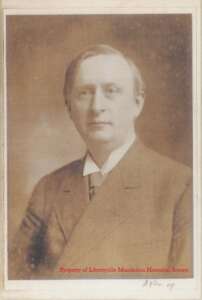
Arthur Frederick Sheldon
Would I be doing any of that if not for Arthur Sheldon?
If I were to set up a Mount Rushmore of the four greatest influencers on the world of enabling sales professionals, he’d be the first in line (along with John Patterson, Lucinda W. Prince, and probably Worthington Holman).
I’m enamored with Sheldon’s story, researching everything I can find on the man. I’ve visited the land he had bought to set up a sales university. I’ve checked out the sight of his first office. I’ve scanned every available source online and even visited a local historical society where he had first set up shop.
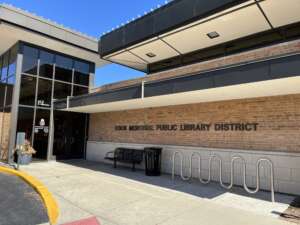
Cook Memorial Library, Libertyville, IL
My research led me to the Cook Memorial Library in Libertyville, Illinois. With the support of staff, I found in a file a handwritten speech given in what appears to be 1975. It was a talk by a woman named Nina Rause Hatching. While the last number in the year was cutoff, a piece of it leads me to believe it was a “5”, but the date was May 25th, 197-.
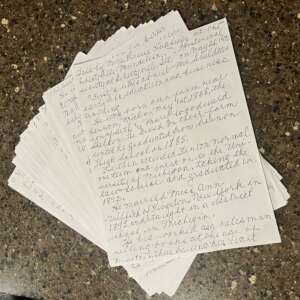
The copy of this handwritten speech and letters
In a Libertyville-Mundelein Historical Society speech given in Libertyville, Illinois, Mrs. Hatching told the history of Arthur Sheldon from the perspectives of many. They let me make a copy of the entire speech. My operations manager, Nicole, took the time to write this out.
Here it is. There are some parts that were very difficult to read, some sentences cut off, and in some cases, sentences were crossed out (marked as such below). But it’s fascinating…
Talk by Nina Rause Hatching at the Libertyville-Mundelein Historical Society at Libertyville, Ill. on May 25 197-
Part I
First, a little about Mr. Sheldon’s early life, education and business training.
He was born on a farm near Vernon, Michigan on May 1st, 1868, the son of Seth and Mary Woodward Sheldon. He lived on their farm until he graduated from Vernon High School in 1885.
He then attended Fenton Normal one term and went on to the University of Michigan, taking the law course and graduated in 1892.
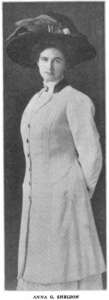
Picture from ~ 1911 of Anna Griffith Sheldon
He married Miss Anna Griffith of Kingston, New York in 1895, and taught in a district school in Michigan for two years.
He had worked as a salesman selling books at the age of nineteen, thus paying his way through college.
He went to work for Werner Company in 1893 as Branch Office Manager and later he became General Sales Manager.
Following that, Sheldon organized and became President and General Manager of The Sheldon Publishing Company of Chicago.
He sold out all of his interest in that company in 1902 when he organized the Sheldon School.
By that time he was author of “Science of Successful Salesmanship”, “Science of Industrial Success”, and “The Science of Service”.
Sheldon became President and Director of The Sheldon University Press, Director and Editor of The Business Philosopher, a magazine.
From The Chicago Publishing House for whom he was working as Manager, Mr. Sheldon rented a small room and with a part time stenographer started his business school.
On July 24th 1902, the first regular law student enrolled. In January 1903 another room was added and additional help employed. One year later he had one thousand students and the enrollments were coming on at the rate of one hundred fifty per month.
In September 1903, one of his early students was appointed manager and an aggressive selling campaign was inaugurated.
In February 1905, the school was recapitalized and named The Sheldon School.
In ten years, there were ten thousand students, some in foreign countries, and the school employed one hundred ninety five persons.
In May 1905, the school moved to the Republic Building, but soon that location was outgrown.
In early 1908 the magazine and book departments were moved to Libertyville, the upstairs of the Sehanck Building.
It had been Mr. Sheldon’s ambition to found a commercial university in the country and a Lake Country site pleased him. He secured a tract of land of about six hundred acres, the former Norton and Schanck farms and part of the Holcomb farm lying along what is now Route 45 or Lake Street and a little north of Route 176 or Maple Avenue in Mundelein, then Rockefeller and in Libertyville Townships.
The tract included a large open spot in the center which was a boggy slough called Mud Lake.
Mr. Sheldon built an earthen dam at the east end of the property over a ravine. This project cost fifteen thousand dollars, but it created a beautiful, spring-fed lake about a mile long, with an irregular shoreline. A road was built around the lake with several bridges over low spots or streams. The lake was completely surrounded by woods which added much to its beauty.
A house on the property, but out on Route 176, was remodeled and became the Sheldon residence.
The first building of the school was completed in 1910, a fine two story and basement modern brick building which contained the offices, the stock and shipping departments.
The school moved into it in March (1st) 1910 (later read the 28th). A short time later, at least a year, a second building of similar design and size was built to house the presses and handle all the required printing.
The buildings were just inside the south gate to the property, and was only a couple blocks north of Route 176. That four block area is bounded by Wildwood Glendale and North Avenues and within that area several homes were built and occupied by employees who came from Chicago with the school.
Part II
In giving a history of The Sheldon School, it is important to know something of the man who had the dream and added to it through a number of years of study and work.
Mr. Sheldon was a very fine gentleman. He was kind and considerate. He wanted everyone to be happy, as well as successful, but always with honor, integrity, and reliability.
He was not only a teacher of salesmanship, but a builder of character.
The best information we have of Mr. Sheldon’s personal life comes from a letter received by Mrs. Oscar Bell, formerly Miss Blanche Shaddle, from his daughter Miss Helen Sheldon of Kingston, N.Y. written on Jan. 14, 1960.
At the time, Mrs. Bell was associated with the Sheldon family, she was Miss Blanche Shaddle of Rockefeller now Mundelein.
Blanche arrived last Monday evening from her home in Tacoma, Wash. in time to be with us for this program and has kindly consented to read (portions of) the letter (from Helen) for us and also tell about parties and other times of pleasure spent with Mrs. Sheldon and their children Frederic, Helen, and Rachel.
Following is a copy of the letter:
January 14th, 1960
“Dear Blanche,
Thank you for your fine letter of January 6th.
“The Libertyville postmark caught my eye at once. Hearing from you was the greatest pleasure. Area (Mundelein) and Libertyville have always held fond(est) memories for all of us. And you and your family were our closest neighbors. How well I remember the road past your house to the village, the three of us going full speed on Bella, Apollo, and Brownie.
“I go along with you in many happy memories of the lake and woods and of the fine club Mother had for about thirty of us youngsters in the neighborhood.
“Our parents were two very wonderful people. It is a joy to me to know their efforts in those early days are remembered and appreciated.
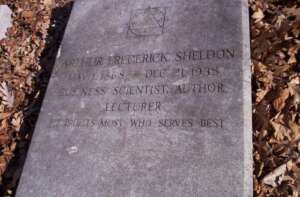
Picture of Arthur Sheldon’s gravestone I found along the way
“You probably knew that our father died at our ranch in Mission, Texas December 21st, 1935. This was after several months illness.
“Frederic, we had lost tragically in 1929. He had a tumor on the brain for which they could not operate. He had been a great help to Father in his work. He had not married.
“Mother passed away, after a brief illness, but severe, on April 7th, 1958. She and I had been here alone since Father’s death.
“We came here as a whole family shortly after we left Chicago. It was my Mother’s Father’s home. She was married from this home.
“Until she was taken to the hospital four days before her death, the first thing she said each morning was, “Well, what do we do today?”
“She said, Father loved people and loved to have many friends about them. She was a great help to him in giving his life to his ideal of service; And she was a great person in her own right. You may remember she was a fine pianist.
“Many years ago she lost the use of her right arm in a motor accident. After a time she learned to play a repertoire for left hand alone. She had amazing facility. Her pluck was a lesson and encouragement to (a great) many. At Tarpon Springs, Florida while being entertained at a big luncheon on a sponge fishing boat of one of Father’s students she put on a divers suit, on the spur of the moment and went down in thirty feet of water to get specimens of seaweed for her collection.
She designed the house on the ranch in Texas and Frederic and a gang of Mexicans (laborers) built it.
At the ranch she built a theater (small) where we had a Christmas Pageant and Festival where native Mexicans and other Americans learned to work together and it helped to build a fine community spirit. We had as many as five hundred in the auditorium.
She painted so well that a copy of Rembrandt done by her was stopped at the port of New York because they thought it was an original.
She is buried between Father and Frederic in Montrepose Cemetery, here.
Rachel married an Englishman (since naturalized). He is a musician.
They live at the Texas Ranch and have had an interesting life. They have no children. Their name is Mr. and Mrs. Wilfred St. Clair Fisher.
“I am staying on here. I did have a small career with the harp, nothing recently.
“I enclose some snapshots of this place. There are over two acres, right in town.
“We came to love this place very much, as well as the one in Texas, but only one who has lost “a dream come true” can know the heartache of all of us, (but especially of my Father), in leaving Area (Mundelein) with all its beauty and plans for the future.
After Father recovered from the breakdown, which was the chief reason for selling the institute, he turned over the direction of the Sheldon School of Chicago to others.
Reserving the right of oral teaching for himself.
“He lectured from one end of this country to the other. He taught human engineering in a “Forum of Fundamentals” in practically every city and town in this country, working through the Chambers of Commerce. During the time he was in each he addressed large groups of businessmen and professional people, preached in churches, had separate classes for teachers, and for the pupils in public schools. He was called to Rahway, New Jersey Reformatory to give a series of talks to the boys. He spent a year in Rochester, N.Y. writing textbooks for the public schools. He was on the faculty of Miami University for three years. He went to Reading, P.A. to help [to help] settle a Penn. Railroad strike, etc, etc, etc.
He talked to almost every Rotary, Lions or Kiwanis Club in this country and to district conventions.
He can honestly be called “The Father of the service clubs.”
It was his own “Philosophy of Service” that he gave to Rotary when he addressed their first International Convention in Edinburgh, Scotland.
Headquarters tried not to give him full credit. The fact is – it is history that he inspired Rotary with the “Service Ideal” way back in 1908 when he joined the club.
His first works were published in 1902. He wrote the first “Code of Ethics” ever written for business or industry and for the Restaurant Association.
There is so much more I could write about Father and his work.
You know how generous he was. They still remember at Lyon and Healy’s in Chicago how he sent home as a total surprise a Steinway Grand Piano, two concert harps, a violin, and a cello.
He did the same thing once with pets, something for everyone.
Later, in Texas, he had delivered as a surprise, a Franklin Limousine (with chauffeur) for Mother, a Dodge Coupe for Rachel, and a Dodge businessman’s Sedan for Frederic.
They came down the driveway in procession. I was not included that time because I was in New York.
Father’s own taste was very simple. What he wanted most was to have the “Principal of Service” known the world-over. He felt it was the cure for all problems.
(There was a personal ending for Blanche with best wishes for all)
(Signed,)
Helen Sheldon
Part III
The Sheldon School was started as a means of teaching a higher quality of salesmanship. Mr. Sheldon applied his methods to the promotion of ideas as well as to the actual selling of commodities. He reduced his methods to a formula which he believed should be followed by everyone seeking to vend his merchandise, ideas or services to someone else.
His formula was quite simple and involved the following steps
- Attention
- Interest
- Desire
- Convincing the prospect to buy
- Resolve to close the deal
The lessons were calculated to teach the people how to achieve each of these steps, which, theoretically would result in victory.
In addition to studying the lessons, the pupil was continually exposed to helpful lectures by Mr. Sheldon and the other “Philosophers” who eventually composed his staff.
The idea was to build up the pupil, mentally, morally and physically, in addition to improving his salesmanship.
One of the helps for this noble purpose was his magazine, “The Business Philosopher” which carried helpful articles regarding talks and quotes from great men of the past, recommendations for proper diet, physical exercise, right thinking, and the study of psychology.
Sheldon was an idealist. He was sincere and there was merit in his teachings. For his right hand man Mr. Sheldon employed Arthur Newcombe who had been Secretary for John Alexander Dowie from Zion, Ill. and as Managing Editor of the “Business Philosopher” he hired Tom Dreier.
These were men of good character and ability and each had two or three articles in each month’s issue of “The Philosopher” which had a wide circulation.
Many women were employed in the various departments, some in quite responsible positions.
One of his staff writers was Elsie Bell who signed her mail and articles with the initials L+C. This would cause anyone reading her letters or articles to assume they were written by a man.
Mr. Sheldon’s idea was to build a school in the country where all the activities could be carried on.
His hope was to get a large tract of land where his employees could build homes close to their work and where, in time, retired salesmen would come to build and spend their declining years about their Alma mater.
Many of the Sheldon workers from Chicago came to Libertyville and Rockefeller to make their homes and found the village life pleasant and the working conditions in the new location good.
Many of those employees brought other members of their families here to work for Sheldon, so that in a short time he was the employer of several family groups as the following will testify:
He had at one time on the payroll 3 Dreiers, 3 Newcombes, 3 Leddy’s, 3 Jedlickas, 4 Kennedy’s, 2 Lindquists, just to mention a few. He employed quite a number of local young people, too.
*Mr. Sheldon realized the lack of activities in a town of 350 population and kindly permitted several employees to teach various subjects in a room at the school several evenings a week, shorthand and typing, bookkeeping, vegetarianism and other subjects were presented which gave many young people the opportunity to have a pleasant evening besides improving their minds.
The pay was not high but not bad for the times and did allow employment for a large number of local young people, mainly girls whose opportunities were limited locally. It also gave them an opportunity to learn the basics of an office so they could more easily procure employment in other locations.
The working conditions were very pleasant and social life was encouraged for the workers.
*The upper floor of the main building was made into a large hall with offices at each end. This hall was used for lectures, meetings, summer classes, dancing and other parties.
Mr. Sheldon realized the lack of activities in a town of 350 population and kindly permitted several employees to teach various subjects in a room at the school several evenings a week, shorthand and typing, bookkeeping, vegetarianism and other subjects were presented which gave many young people the opportunity to have a pleasant evening besides improving their minds.
Local people were encouraged to attend these activities and many a noon hour was spent dancing. There was out of door summer recreation of swimming, picnicking, and canoeing, and in winter coasting, skating, and sleighriding.
Horseback riding was also very popular and there were quite a number of horses available from the stables of Arthur Koon who conducted the farming operations of “Sheldonhurst” and dealt in horses as well, principally saddle horses and hunters.
Nearly sixty five years have passed since the School was in its hey-dey and most of those actively connected with it have passed on but the memories of the times still linger in those remaining.
A brief glance at the local columns of the Libertyville
[hey-day and most of those actively connected with it have passed on but the memories of the times still linger in those remaining. A brief glance at the local columns of the Libertyville] Independent Register for the early months of 1910 reveals the following:
January 14:
“The Sheldon School reports that it expects to employ about 75 persons in the office building now being erected.”
January 28:
“Mr. Arthur Koon has just returned from a trip on which he purchased a number of new jumpers for the stables at Sheldonhurst.”
February 11:
A large display “ad” offers employment for young women in the offices of the Sheldon School, “Salaries, $30 to $40 to start”, signed by Ed Dreier.
A Personal *can’t make out the word*
When the school came to Rockefeller in 1910 Mr. Charles Johnson, a local man, became their farm foreman.
When the press building was completed he and his family moved into the apartment upstairs.
His daughter Mable lived in this apartment with her parents from the time she was in the third grade at the local grade school until she graduated in eighth grade at which time the Sheldon School moved back to Chicago and they moved to Libertyville.
She reports a very happy, enjoyable time while living there.
An interesting story comes out of this, several years later Ferdinand and Mable met and were married and are living in Mundelein; but that’s another story
*Starts in the middle of Page 30 with “months of 1910*
Jan 21, Mr. C.N. Durand is attending a meeting of the Directors of the Sheldon School in New York this week.
March 4, The Sheldon School offices moved into their new building at Rockefeller
Old numbers of the bound Business Philosophers tell a great deal about the School’s aims and methods and the advertising and testimonials indicate the wide acceptance of Mr. Sheldon’s ideas.
Reading between the lines one gets the impression that Mr. Sheldon was greatly influenced by Elbert Hubbard and his “Fra Elbertus” booklet.
Mr. Hubbard visited Mr. Sheldon at one time and spoke to the summer students. He perished with the Lusitania on May 7, 1915.
The August 1909 copy of the “Philosopher” probably is typical and contains among other material: “On the front porch = Talksey Talks” by “Initiative in Business” by W. K. Kellogg (of Cornflakes)
“Description of Roy Croft”
“Ideal Community” by Elbert Hubbard;
“Ten Commandments of our Business” from Bliss Fabyan and company;
“Gleanings from the Business Field” by Thomas Dreier;
“A Message from Garcia” by Elbert Hubbard;
“Steps in Salesmanship” from articles by H. H. Heeft;
“Mind Wanderings” by Thomas Dreier
After the Sheldon School became established in Rockefeller and due to its abundance of its mail the post office was advanced from 4th class to first class.
At that time Mr. Sheldon discussed with the village Board the changing of the name of the village. It was his desire to give it a name that had a meaning and connection with his teaching.
As a slogan the school had chosen the four words, Ability, Reliability, Endurance, and Action the initials of which spelled Area.
Everyone was happy with the Sheldon School. It had brought much to our town, prosperity added social life a beautiful lake.
The local people became a part of the school activities and the school had become a part of our town.
Therefore, the residents were willing and I am told that the vote was unanimous and 319 in number the name was changed by changing the letters in Area around a little they came up with the name Eara which was given to the lake.
Declining Years
The school continued to prosper or appeared to for approximately seven years.
But the cost of maintaining Sheldon’s idealistic program took a lot of money of/and those handling the business and management failed in their department.
He tried to sell some of the land for homesites, but was not very successful and in the process of financing with outside capital he lost control of the school and had to relinquish his position as its head.
The new management tried for a time but Sheldon’s personality was lacking. The school deteriorated and the original staff disintegrated. The remnant moved back to Chicago in 1917 where after a few more years it was liquidated. The property was sold to the Roman Catholic Archbishop of Chicago but the deal was not finalized for a few more years.
They greatly improved the road, the dam and the bridges and started many new buildings at the west end of the lake but that’s another story.
Part IV
As has been mentioned before many students came for summer school.
They attended lectures and classes in the hall and in a large tent. They had their meals in a room in the press building.
There was also fun and recreation, swimming, horseback riding, hiking in the woods, tennis and evening parties and dancing.
The entertainment that impressed me the most was the performing of Hiawatha as a pageant in a natural amphitheater on a hill on the south side of the lake.
I recall the girl Minnehaha in the casket on a raised platform, and the man who stood on a large stump reading the poem but Hiawath standing in a canoe, very straight and tall, his arms folded across his chest and the canoe gliding very quietly across the lake in the lane of moonlight and not a ripple on the water.
The night could not have been more perfect and it was a beautiful sight.
I never did find out just how they did that but it was very well done.
Ed Dreier of the Business Philosopher bought a lot just across a ravine to the north of the School Building and put up a log cabin where he and his wife lived.
Many pleasant evenings were spent there by many of the employees and other friends. Blanche’s parents, Mr. and Mrs. Frank Shaddle of Mundelein purchased a log cabin later and she can tell you more about the use of it from that time on she will also tell you more about the summer – *rest of the sentence is cut off the page*
Our personal remembrances as grade school children at the Lincoln School, our only school for quite a number of years we always had our annual picnic in the woods near Mud Lake.
As we became older, we coasted down the long hill east of the location of the Cardinal’s home and it is my understanding that when the next group younger were using the toboggan it went down in Mud Lake, and was never recovered.
Later, after the lake was made by Mr. Sheldon larger we went skating there on many a moonlight night.
I started work at the Sheldon School at 18 years of age when they opened in March, 1910, in the mailing dept.
I had no previous office experience and no business training, but folded, inserted, sealed, stamped, advertising, lessons, and study material.
Later I was promoted to the mail opening section and became quite efficient in deciphering poorly written English and letters from foreign countries. This mail I delivered to correct offices.
Later, after taking shorthand and typing from one of the girls from Chicago, Lillian Newhouse, I became Elsie Bell’s Secy and assistant to Albert Howe who was from N.Y. and related to C.N. Durand the Bus. Mgr.
His uncle was there also and was manager of The Sheldon Press.
I enjoyed my three years there very much but left to work there in the First Natl. Bk. of the Mundelein and later in the post office and on and on.
Part V
Winnie,
Now, I want you to meet one of the few Sheldon School girls we could locate. When we talk to her about it she immediately radiated her pleasant memories.
She was 17, had had no working experience, in fact she just worked there one summer vacation.
“Miss Winifred Mack, later Mrs. Al. Hapke Ruth
Now, we have just one more Sheldon School employee and she was with the School close to five years. Miss Ruth Taylor of Libertyville, now Mrs. Russell Rouse, Sr. of Mundelein, my brother’s wife.
*Ruth was 18 and had had secretarial training in business college both typing and shorthand.
She says I’m the gabby member of the family so I can give her reaction to life and employment at the school.*
She was Mrs. Waterson’s (Mrs. W was the office manager) Secy or assistant the full time of employment.
She started in Area the latter part of 1911, moved back to Chicago to The Gunther Building with a certain group or dept. on February 16, 1915 and back to Area on Jan 3, 1916.
This we cannot explain as we were unable to find the reason for this move Her reaction to the Sheldon School on all aspects was one of enjoyment in the business, her associates, noon dancing, lunches in the beautiful surroundings, the recreations, and the same impression as I had in connection with the Hiawatha pageant and especially the canal scene.
Sometimes she and others rode their bicycles to and from work and she recalls that one time the Libertyville group missed their Northshore Train and all walked home along the tracks.
She left their employment in Oct 17, 1916 when she and I left the 19th for Billing, Mont.
The School made its final and complete move back to Chicago sometime in 1917.
Ferdinand Tegtmeier of Rockefeller Area and now of Mundelein worked as an errand boy at the Sheldon School when he was 17 and 18 years of age.
He picked up the mail at the post office morning and delivered it to the School and took the outgoing mail to the P.O. in the evening, also ran other errands.
He reports that he was not too interested in the course but enjoyed his work and those he came in contact with. He left when he was 19 to enter the service.”

My name is Todd Caponi, CSP® I’m a sales keynote speaker who also teaches revenue organizations how to leverage transparency and decision science to maximize their revenue capacity. It’s what I do…teach sellers, their leaders, well…entire revenue organizations how we as human beings make decisions, then how to use that knowledge for good (not evil) in their messaging (informal and formal), negotiations, and revenue leadership. I wrote a book Book Authority had listed as the 6th best sales book of all time (𝘛𝘩𝘦 𝘛𝘳𝘢𝘯𝘴𝘱𝘢𝘳𝘦𝘯𝘤𝘺 𝘚𝘢𝘭𝘦), and a second award-winning book (𝘛𝘩𝘦 𝘛𝘳𝘢𝘯𝘴𝘱𝘢𝘳𝘦𝘯𝘵 𝘚𝘢𝘭𝘦𝘴 𝘓𝘦𝘢𝘥𝘦𝘳).

Reach out if you want to discuss The Transparency Sale sales methodology, or really…anything else (sales kickoffs, workshops, keynotes, the economy, history, etc.)! Email info@toddcaponi.com or call 847-999-0420.
Sign up for the newsletter for more of my nonsense in your inbox every other week, with some sales history sprinkled on top…Sign Up – The Transparent Newsletter

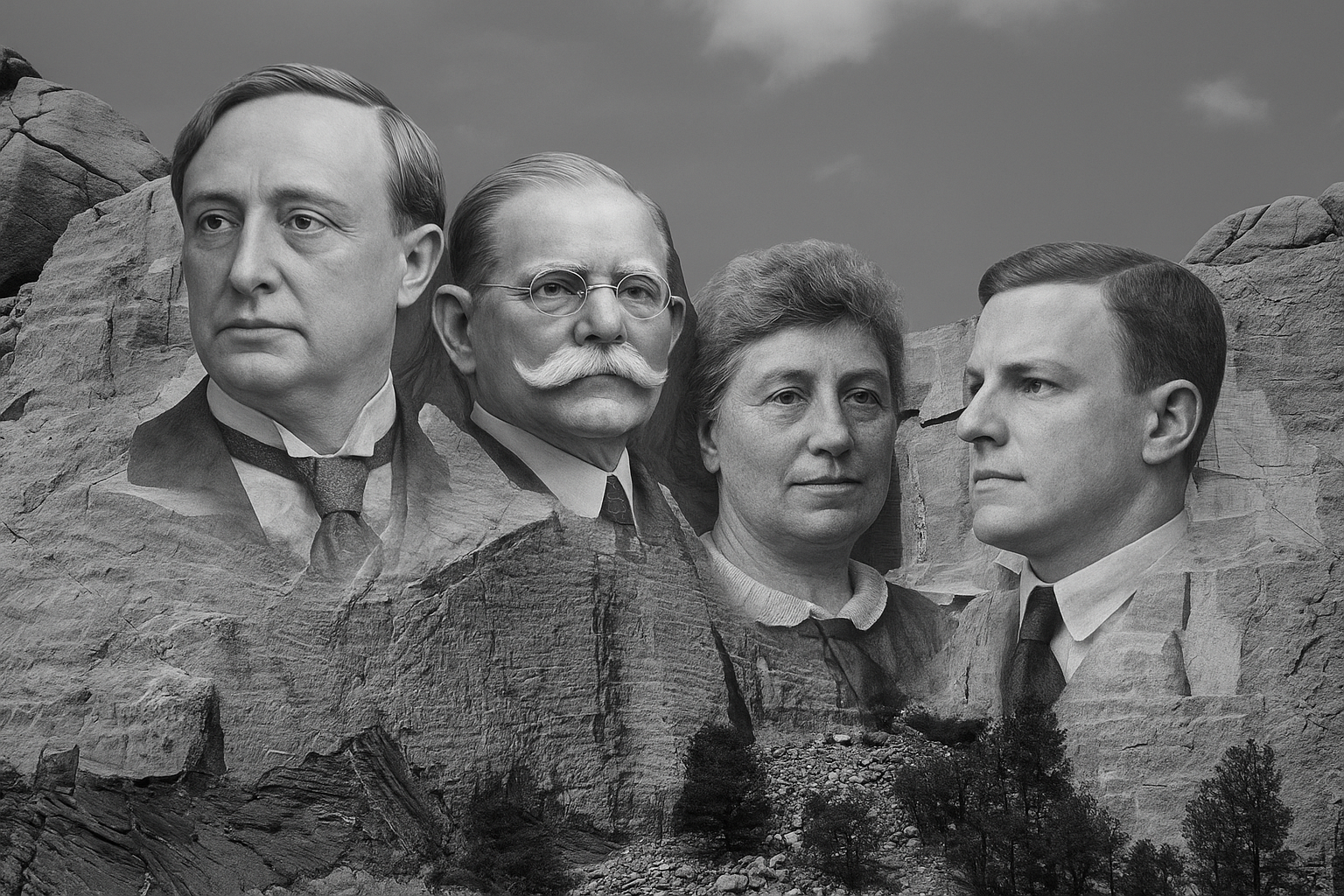

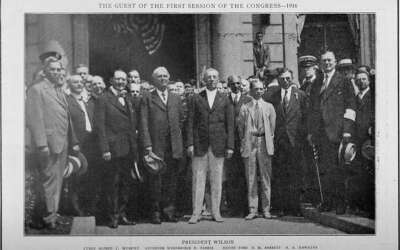
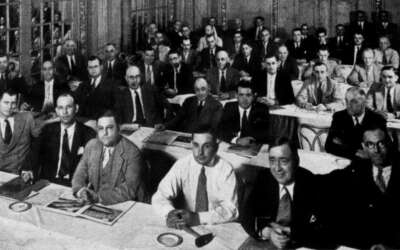
0 Comments